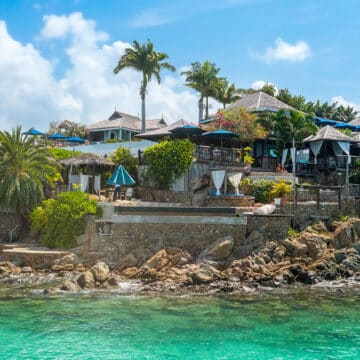By Nigel Spence
CJ Contributor
This is a stellar year in Jamaica’s history, as Jamaicans and well-wishers everywhere will soon be celebrating the country’s 50th Anniversary of Independence. Easily one of the most beautiful places on earth, Jamaica is not merely my country of birth; it is the country of my heart and soul. I am born and bred Jamaican to the core.
For such a small nation, we have made immense contributions to the world at large. Chief among them, Jamaica introduced Reggae music to the global stage, and so it came as no surprise that the Album of the Century was awarded to none other than her native son, Bob Marley. In addition, our world-class athletes, including the fastest man alive, Usain Bolt, have continuously gotten the world on its feet cheering our island nation to glory, shattering world records and racking up countless gold medals in every arena.
However, there are other contributions which have not received quite as much publicity, even though it has been well deserved.
In the culinary arena, we are quietly setting palates ablaze all across the globe with our legendary cuisine, including Jerk, now considered to be one of the latest culinary trends to hit the industry. It has even found its way onto menus crafted for presidential dinners.
Jamaican cuisine has long held the distinction of including a vast mélange of flavours, techniques and traditions, all of which were and are naturally on trend. Strangely enough, now living in New York, I find that the older I get, the more my roots reassert themselves in my everyday life, and as a trained chef, this is especially evident in my cooking.
Who knew that years of formal culinary training grilled into me (pardon the pun) at one of the toughest culinary academies, would ultimately propel me to rebel against the strict order of it all and go my own way — in typical Jamaican style. After all, these supposed new and emerging culinary trends that were being drilled into me were really not new to me at all, as they were ingrained in me from my Jamaican culture — though we tend not to realize it.
I grew up in Kingston in the 1970s in a neighborhood called Richmond Park. A very fond memory is that of the “tripe” lady, as she was called. She would sweetly sing out to announce her presence while pushing her cart made of random pieces of distressed wood (yes, she, too was well ahead of her time with contemporary style) all nailed together to create a large box which was mounted on a rusty cast-iron axle that must have been devised by an accomplished “street engineer.”
This contraption rested on two “ginormous” oversized rusty iron wagon wheels that must have once been used on an old horse driven carriage. It was, in essence, the definitive mobile meat market.
We must have been among her better clients, because she always seemed to slow her pace in front of our gate and took a few extra minutes before moving on, hoping to score a sale from the head of a household of nine.
“Tryyiiiipuh, fresh tryyiiiipuh” she would sing out as she stood by the front gate, with our dogs going insane — if not for the smell of the fresh meat, then for the high-pitched sales call.
If my mother showed up to strike a deal, she would then push her cart into the driveway next to a Julie mango tree, where she would hang the chain for her scale on a low-lying limb and begin the inevitable haggling that seemed to be more like friendly banter, rather than protecting the bottom line.
She would remove the wooden cover of the cart, then a thick, dark burlap cloth (or “crocus bag” cloth as it is called in Jamaica), to unveil the fresh tripe that was being kept cool with huge blocks of ice.
My job at this point was gatekeeper and swatter to ensure the flies — and our dogs — would not interfere with the fresh kill and the business at hand.
“Mam, dis cow jus finish kill this mawning early, and me keep di bess part of the tripe jus fi you!” she would say.
The cow that she would speak of just being killed could easily have been one we might have seen a day or two before wandering through our neighborhood, feeding from a mango tree or patch of the neighbors’ lawn or hedge, as that was how many cows in Kingston met their nutritional requirements.
The smell of fresh tripe is not for the faint-hearted, but even at the tender age of 10 years old, I loved it!
Beef tripe refers to the intestines of the cow, which have been carefully cleaned of its contents and prepped for sale.
The tripe lady would also have a few other fresh cuts of meat available for her favorite clients, such as the cow tail, meat for stew or bones for soup.
I would help to put the items on the scale, which would facilitate my being able to choose my favourite parts of the tripe that would inevitably be simmering in curry come evening. This becomes very important when one has to fend off six other siblings including a very greedy older brother (I joke, I joke!)
This entire transaction, from the construction of the meat shop on wheels to the style of cooking the tripe, is the perfect illustration of the fact that much of what seems to be trending in the food scene these days — buying local, sustainable agriculture, free-range, eating organic, the slow food movement and the live food movement — have all been a way of life for Jamaicans for years, whether by necessity, culture, tradition or ideology.
These days, in New York, I find myself going back to the basics and, instead of only searching out the latest culinary trends, I am now trying to source all of the old-school ingredients that made Jamaican cooking so complex and flavourful.
Personally, I now cook exclusively with coconut oil. I even find myself going as far as cooking outside with coal and wood in summer. I think it’s that deep connection with my homeland that burns brightly inside of me and most Jamaicans living abroad that keeps us so grounded and true to our roots; forever connected to a creative and multifaceted way of life.
And as I hear the familiar question so often: “you left Jamaica more than 30 years ago, but you still sound like you came to the states last week” — is the biggest compliment I, or any Jamaican, can get.
Although far removed to foreign nations for years, our pride and love for our place of birth compels us to keep our deep Jamaican accent and patois tongue when necessary, along with our unique use of the English language that keeps us “real” and hopefully, one day, homebound.
Whether you live in New York, Amsterdam or Beijing, as Jamaicans, our goals are the same – to teach the rest of the world how to live freely, eat abundantly, cook flavourfully (yes, with pepper aplenty), chat patois, sing reggae, drive defensively, bubble correctly (for those not in the know that means dancing) and to enjoy life fully regardless of your circumstances, and never forget that home is never far away.
So, as we near the Golden Jubilee, let it be a reminder that we must always seek to represent well all that is Jamaican.
I am unbelievably proud to be from the Rock – Jamaica, Jamrock, Jamdown, Yaad — for she has given me life, spirit, freedom and a voracious love of food.
Happy 50th!
Nigel Spence, a Culinary Institute of America alumnus, was born in Kingston, Jamaica. Nigel freelanced at the Television Food Network for 3 years where he worked with culinary luminaries such as Mario Batali, Bobby Flay and Emeril Lagasse. Chef Spence has appeared twice on Throwdown with Bobby Flay where he emerged the victor in cook offs against the Food Network star and was featured on CBS when he appeared on Tony’s Table as well as ABC’s Neighborhood Eats, NBC’s The Today Show , Sirius’ Everyday Living with Martha Stewart and TVFN’s Chopped. The acclaimed and New York Times-reviewed Ripe Kitchen and Bar is Mr Spence’s first entrepreneurial endeavour.








